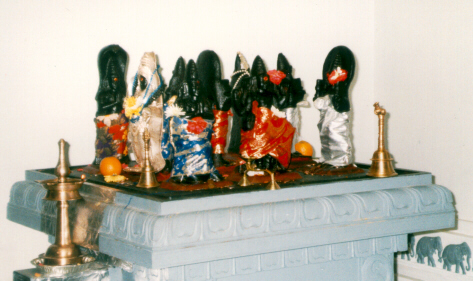
Navagrahas in Shiva-Vishnu Temple, Maryland, USA
In all important Siva temples of South India, the navagrahas (nine planets) are placed in a separate mandapa with a pediment of about three feet in height.Performing Navagraha Homam is very auspicious. Offerings like sesame seeds, rice or any of the "nine grains" that may be appropriate are also made. Lighting lamps with sesame oil or seeds on Saturdays is important to Sani. Thil rice and Paayasam are offered to Navagraha.

Navagrahas in Shiva-Vishnu Temple, Maryland,
USA
The sculptures of grahas in Indian Temples
are oriented in such a way that no two grahas face each other. Eight grahas
surround the surya. Surya faces east. Each graha faces one of the four
directions.
| BUDHA^ (MERCURY, SON OF SOMA)
Hands in yoga-mudra 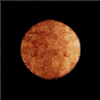
The first planet from the sun(35,980,000 miles). This thing goes from a blazing 430 °C to -180 °C ! It is also the only planet without an atmosphere. |
SUKRA^ (VENUS)
Holds akshamala in right hand and kamandalu in left hand 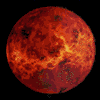
The second planet from the sun(67,230,000 miles). This planet has an average temperature of 459 °C . It's almost like a gigantic fireball it's so hot! |
CANDRA< (OR SOMA, MOON)
Holds kumuda in both hands |
| GURU^ (OR BRHASPATI, JUPITER)
Holds akshamala in right hand and kamandalu in left hand 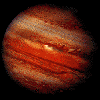
The fifth planet from the sun(483,500,000 miles). This is the largest planet of our solar system, nearly 11 times the size of the Earth, is 88,846 miles in diameter. It is composed of mostly gases (along with some liquid), mainly hydrogen(84%), with the rest being helium. |
SURYA> (OR ADITYA, SUN)
Holds padma in both hands 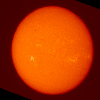 |
MANGALAv (OR BHAUMA, MARS, SON OF EARTH)
Holds danda in right hand, kamandalu in left hand 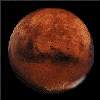
The fourth planet (Red) from the sun(141,600,000 miles). This planet has a temperature range of -87 to 17 °C , making it the most like Earth of the nine planets. |
| KETUv
Arms folded in anjali attitude; lower portion of the body is that of a snake |
SANI< (SATURN)
Holds danda in right hand and kamandalu in left hand 
The sixth planet from the sun(885,500,000 miles). The rings are made from gases thought to be held in position by Saturn's gravity. This is also a fluid planet containig mainly hydrogen and helium in it's atmosphere. It is the second largest planet next to Jupiter being about 9 times the size of the Earth. |
RAHUv
Seated on a sacrificial pit (kunda) |

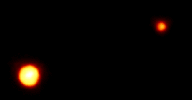
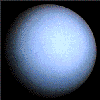
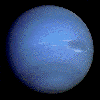
The icons in sculptures in Indian Temples are a celebration of nature, life and aides to memory of the attributes of god. The icons of grahas in Indian Temples are an adoration of the cosmos represented by the planets of the solar system. An excellent example is the depiction of maize in the hands of sculptures in many temples.
Depiction of maize in the sculptures of Indian Temples
The following notes have been taken from Prof. Carl L. Johannessen, Professor Emeritus, Dept. of Geography, University of Oregon. (cf. Carl L. Johannessen and Anne Z. Parker, "Maize Ears Sculptured in 12th and 13th Century A.D. India as Indicators of Pre-Columbian Diffusion," Economic Botany 43 , 1989, 164-80. Yuri Kuchinski has reproduced some photographs which appeared in this article). See also M. Kumar and J.K.S. Sachan, "Antiquity of maize in India", in Maize Genetics Cooperation Newsletter 1993 (vol. 67), p. 98.
Cobs in the hands of sculptures
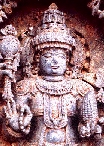


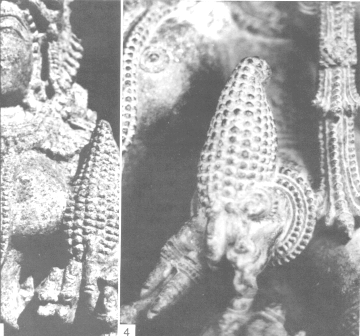
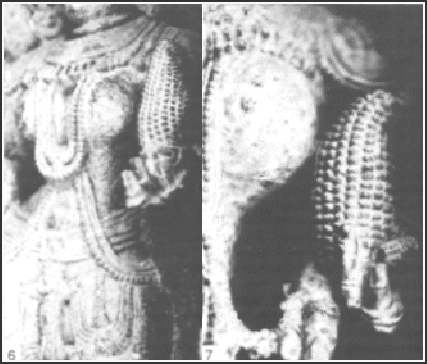
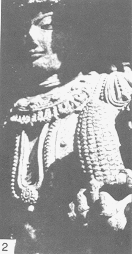
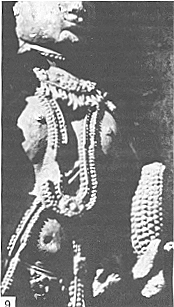 Somnathpur,
Karnataka
Somnathpur,
Karnataka
"Maize breeders in India, China, United States, and Great Britain, who have seen extensive collections of the illustrations, concur with me that only sculptors with abundant ears of maize as models could have created these illustrations of maize. No other biological product has these assemblages of anatomical charateristics within the envelope of variations of maize. I grant that these findings have been thought to be impossible in the earlier belief systems that maintained no significant contact between New and Old World. Their beliefs have to give way to the reality. Archaeological findings will soon be found to verify these predictions, which is also a fascit of the Scientific Method.
"We are currently finding much more evidence of contact between Asia and the Americas. Many of these relate to DNA complexityof biotic forms that can be tested for indications of genetic similarities and genetic distances, but written literature, paintings, sculptures, and archaeological finds all support not detract from the diffusion hypotheses of very ancient sailing contact in the building of high civilizations around the world.
PRE-COLUMBIAN MAIZE IN CHINA AND INDIA?
"The evidence of maize in archaeological sites
in China and its depiction in Hoysala Temples in India, both dated before
the 15th century A.D., suggests that this domesticated crop was diffused
by human action before the arrival of Columbus in the New World. The implications
of this evidence are of great magnitude, since the presence of maize in
Asia indicates that humans were able to migrate between both hemispheres;
more than likely through trans-oceanic means of travel."